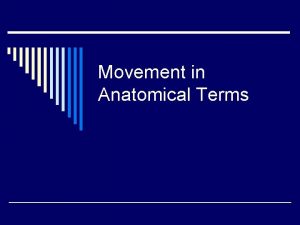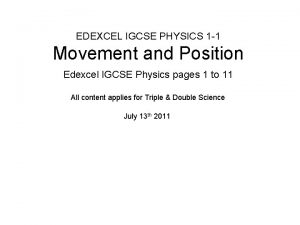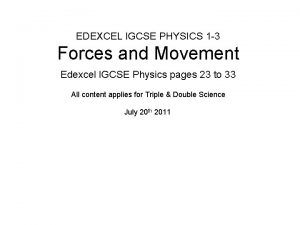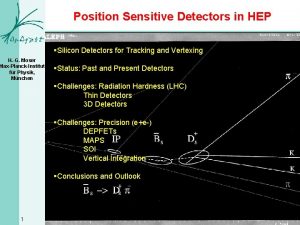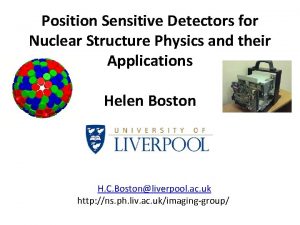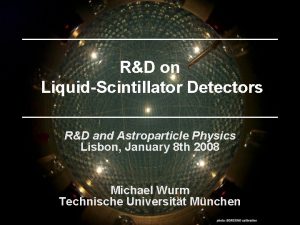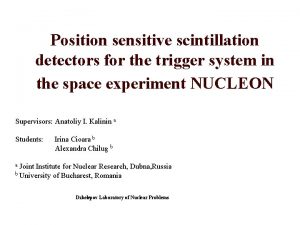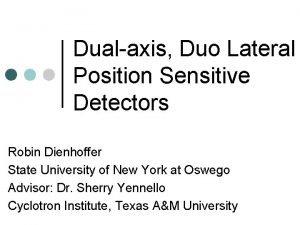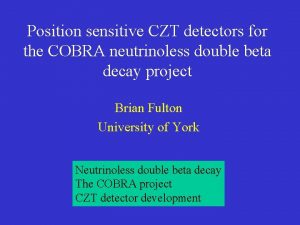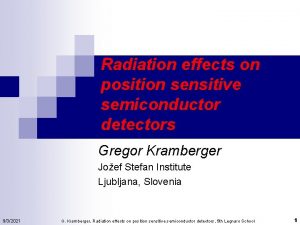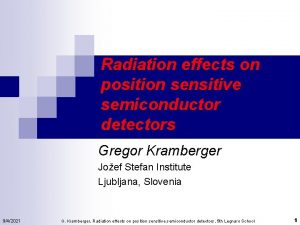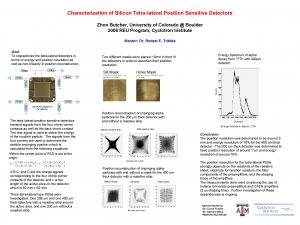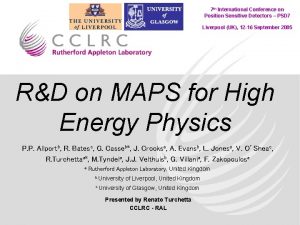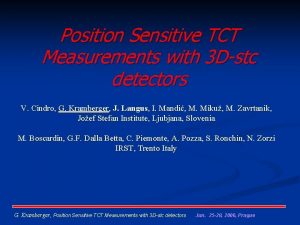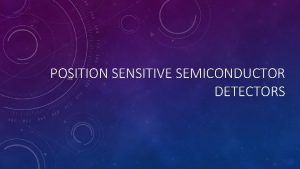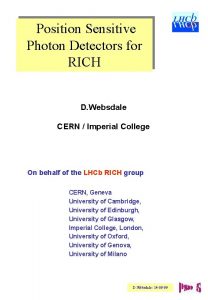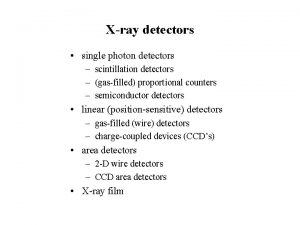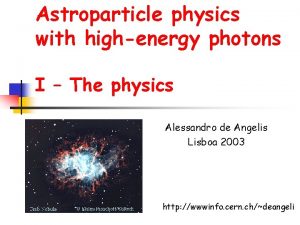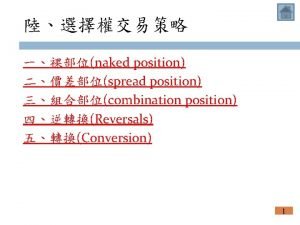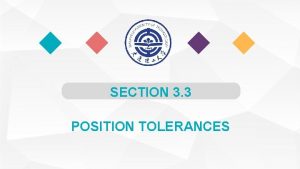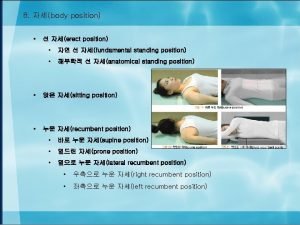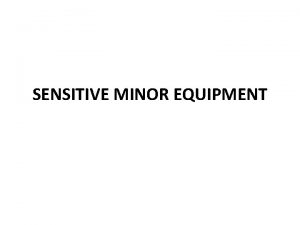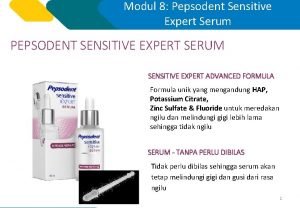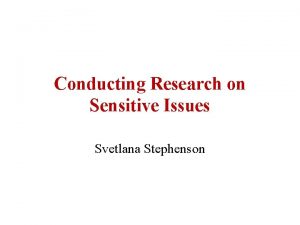Position Sensitive Detectors for Astroparticle Physics Timothy J










![pair conversion telescope ACD [surrounds 4 x 4 + array of TKR e towers] pair conversion telescope ACD [surrounds 4 x 4 + array of TKR e towers]](https://slidetodoc.com/presentation_image_h2/8ec16974ad7430bd5558c216ab6fd869/image-11.jpg)









![[No] Neutrinos – Double beta decays – Measure total energy spectrum of decay electrons [No] Neutrinos – Double beta decays – Measure total energy spectrum of decay electrons](https://slidetodoc.com/presentation_image_h2/8ec16974ad7430bd5558c216ab6fd869/image-21.jpg)









- Slides: 30

Position Sensitive Detectors for Astroparticle Physics Timothy J Sumner Imperial College London PSD 7, Liverpool, September 2005

Position Sensitivity? • Imaging – Sky maps – ν/γ rays/cr? – Directionality – dm • Event Characterisation – Particle identification – dm/cr – Event location (within detector) – dm, ββ – Calibration • Motion Sensing – Scientific signal – gw PSD 7, Liverpool, September 2005

Astroparticle Physics Techniques span at least 20 orders of magnitude in energy and at least 5 different ‘event’ species!!!! PSD 7, Liverpool, September 2005

Cosmic Ray Particles • AMS Goals – Detection of primary cosmic-rays below the knee [~1 Ge. V to 1 Te. V] – Good energy resolution – Good particle identification – Good statistics PSD 7, Liverpool, September 2005

TR+EMC ΔR/R ~ 1. 5% & ΔE/E ~ 3% TR+TOF+RICH PSD 7, Liverpool, September 2005

PSD 7, Liverpool, September 2005

Cosmic Ray Particles • Auger – Observation of ultra-high energy cosmic rays (~1020 e. V) PSD 7, Liverpool, September 2005

Pierre Auger Observatory • Array of 1600 Surface Detectors (SD) – Cylindrical water Cherenkov tanks – 1. 8 m diameter x 1. 5 m tall viewed by 3 9” photomultipliers – on 1. 5 km grid. – Some ability to separate the electromagnetic and muon components. • Array of 4 Fluorescence Detectors (FD) – Each FD has 6 telescopes with 3. 5 m mirrors and 440 PMTs in the focal plane. Each PMT is viewing 1. 5 o diameter and the psf is ~ 0. 5 o. PSD 7, Liverpool, September 2005

+ ΔE/E ~ 25% PSD 7, Liverpool, September 2005

γ-Rays Gamma-ray Large Area Space Telescope • GLAST Goals – Identify and measure the flux of gamma-rays with energy 20 Me. V to 300 Ge. V - LAT – Gamma-ray burst spectra between 10 ke. V and 30 Me. V GBM PSD 7, Liverpool, September 2005
![pair conversion telescope ACD surrounds 4 x 4 array of TKR e towers pair conversion telescope ACD [surrounds 4 x 4 + array of TKR e towers]](https://slidetodoc.com/presentation_image_h2/8ec16974ad7430bd5558c216ab6fd869/image-11.jpg)
pair conversion telescope ACD [surrounds 4 x 4 + array of TKR e towers] e– Grid Calorimeter PSD 7, Liverpool, September 2005

PSD 7, Liverpool, September 2005

γ-Rays • HESS Goals – γ-ray astronomy above 100 Ge. V Technique – Air Cherenkov imaging PSD 7, Liverpool, September 2005

γ-Rays • Four identical telescopes – Davies-Cotton reflector with a flat-to-flat width of 13 m and a focal length of 15 m. – mirror is segmented into 382 round (60 cm diameter) front-aluminized glass mirrors. – psf (<0. 1 o) across the whole 5 o field of view. – 960 photomultiplier pixels subtending 0. 16 o each, with Winston cone light concentrators. PSD 7, Liverpool, September 2005

γ-Rays Background rejection (cosmic-rays!) requires good image recovery ΔE/E ~ 15% PSD 7, Liverpool, September 2005

• Seven identical telescopes – Davies-Cotton 12 m with f/1. 0. – mirror is segmented into 315 hexagonal elements. – psf (<0. 1 o) across the whole 3. 5 o field of view. – 499 photomultiplier pixels with 0. 15 o spacing. PSD 7, Liverpool, September 2005

PSD 7, Liverpool, September 2005

PSD 7, Liverpool, September 2005

Neutrinos • ANTARES/AMANDA/BAIKAL/ICECUBE/ NEMO/NESTOR – Measure Cherenkov light from relativistic muon created by incoming neutrino. – Arrays of photodetectors widely spaced in medium (water/ice) PSD 7, Liverpool, September 2005

10 Te. V m 6 Pe. V m PSD 7, Liverpool, September 2005
![No Neutrinos Double beta decays Measure total energy spectrum of decay electrons [No] Neutrinos – Double beta decays – Measure total energy spectrum of decay electrons](https://slidetodoc.com/presentation_image_h2/8ec16974ad7430bd5558c216ab6fd869/image-21.jpg)
[No] Neutrinos – Double beta decays – Measure total energy spectrum of decay electrons – EXO, Majorana, Cuore, Gerda, COBRA good spectral resolution in large mass detectors – Measure tracks of decay electrons – Super. NEMO, COBRA? PSD 7, Liverpool, September 2005

3 m 20 sectors B (25 G) 4 m Talk by Fulton In this session PSD 7, Liverpool, September 2005

Direct Dark Matter Detection • Requirements – Detect rare elastic nuclear recoil scattering events with ΔE~1=10 ke. V with expected rates 10 -5 to 10 -1 /kg/day. – Reject backgrounds from electron recoils and neutron induced nuclear recoils. – Identify signatures of Galactic particles PSD 7, Liverpool, September 2005

Direct Dark Matter Detection • Techniques – Ionisation detectors – Germanium, DRIFT – Scintillators – CRESST I, ZEPLIN I – Phonons/Ionisation – CDMS, EDELEISS – Phonons/scintillation – CRESST II – Scintillation/Ionisation – ZEPLIN II/III, XENON – Others PSD 7, Liverpool, September 2005

CDMS Position sensitivity defines fiducial volume PSD 7, Liverpool, September 2005

ZEPLIN III Position sensitivity defines fiducial volume and gives multi-site rejection Talk by Lindote – this session Poster by Solovov PSD 7, Liverpool, September 2005

DRIFT Ionisation electrons rapidly attach to CS 2 molecules and these are drifted to read-out plane. High-field detaches electrons which are then detected in proportional gain mode using fine wire read-out Talk by Hiroyuki – this session • Discrimination from ‘range’ vs energy Poster by Ghag/Plank • Directionality from TPC (axis) + d. E/dx (sense) Ø x, y from crossed read-out wire grids (DRIFT I and II) Ø z from event time duration as it crosses readout plane PSD 7, Liverpool, September 2005

Gravitational Wave Detection • Requirements – Detect waves in space-time through strain induced in measurement systems, ΔL/L. – Measure temporal behaviour of ΔL/L – Unravel signals from all sources seen together. PSD 7, Liverpool, September 2005

5 x 10 -14 m 1 x 10 -19 m PSD 7, Liverpool, September 2005

Talk by Lockerbie – this session The ultimate psds!! PSD 7, Liverpool, September 2005
 Frontier detectors for frontier physics
Frontier detectors for frontier physics First position second position third position
First position second position third position Diagnosing error in object detectors
Diagnosing error in object detectors Photo detectors
Photo detectors Feature detectors ap psychology
Feature detectors ap psychology Giant gravitational detectors hear murmurs across
Giant gravitational detectors hear murmurs across What is thermal detector
What is thermal detector Nuclear detectors
Nuclear detectors Feature vectors
Feature vectors Streaming potential
Streaming potential Which detector used in hplc
Which detector used in hplc Feature detectors
Feature detectors Vhv voltage detectors
Vhv voltage detectors Where are feature detectors located
Where are feature detectors located Giant wave detectors murmurs universe
Giant wave detectors murmurs universe Fundamental position vs anatomical position
Fundamental position vs anatomical position Position of fundamental
Position of fundamental Distance time graph for uniform motion
Distance time graph for uniform motion Igcse physics forces
Igcse physics forces University physics with modern physics fifteenth edition
University physics with modern physics fifteenth edition Physics ia sample
Physics ia sample Why does it happen
Why does it happen Läkarutlåtande för livränta
Läkarutlåtande för livränta Treserva lathund
Treserva lathund Centrum för kunskap och säkerhet
Centrum för kunskap och säkerhet Inköpsprocessen steg för steg
Inköpsprocessen steg för steg Påbyggnader för flakfordon
Påbyggnader för flakfordon Sura för anatom
Sura för anatom Egg för emanuel
Egg för emanuel En lathund för arbete med kontinuitetshantering
En lathund för arbete med kontinuitetshantering Tack för att ni har lyssnat
Tack för att ni har lyssnat















